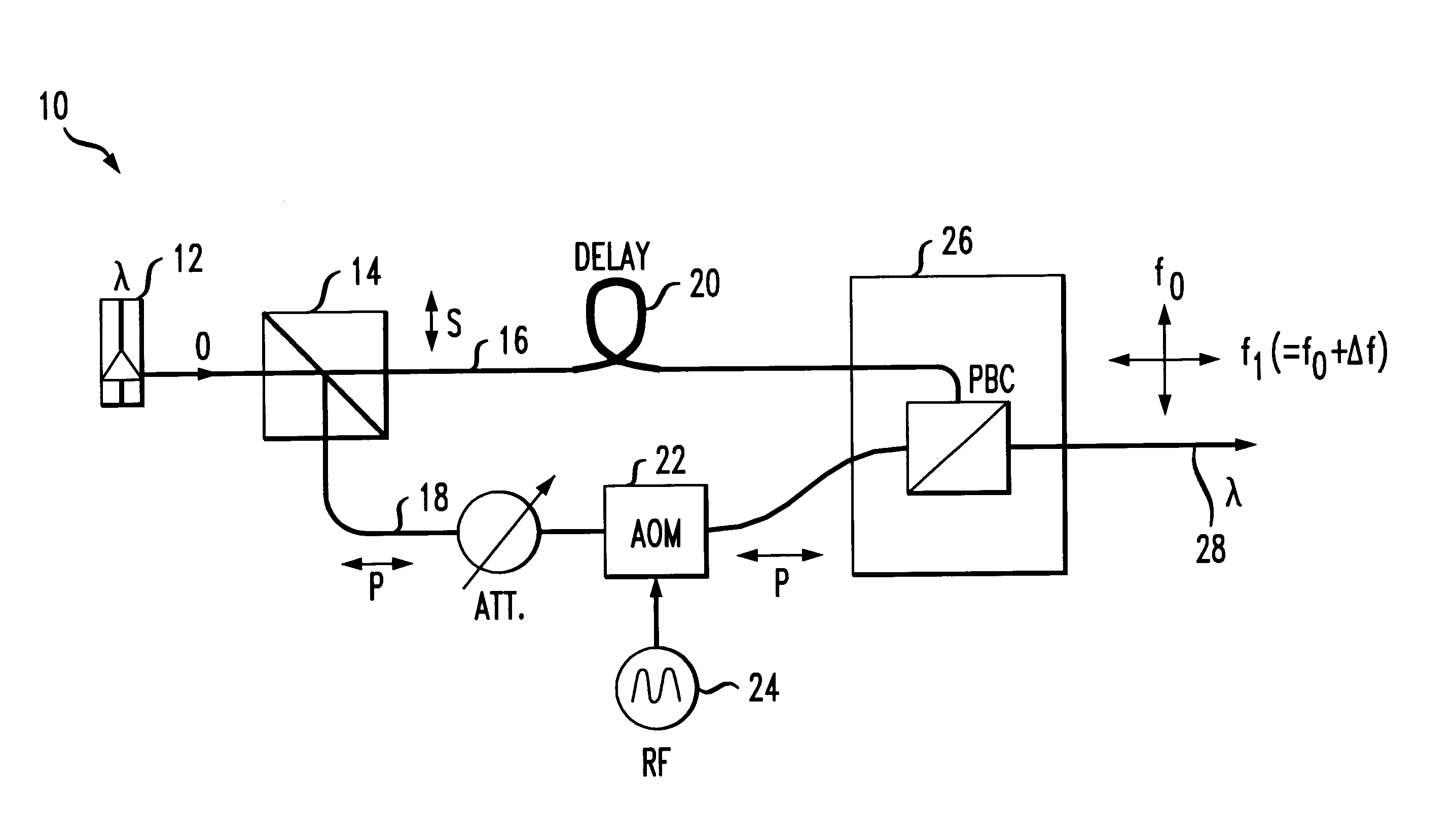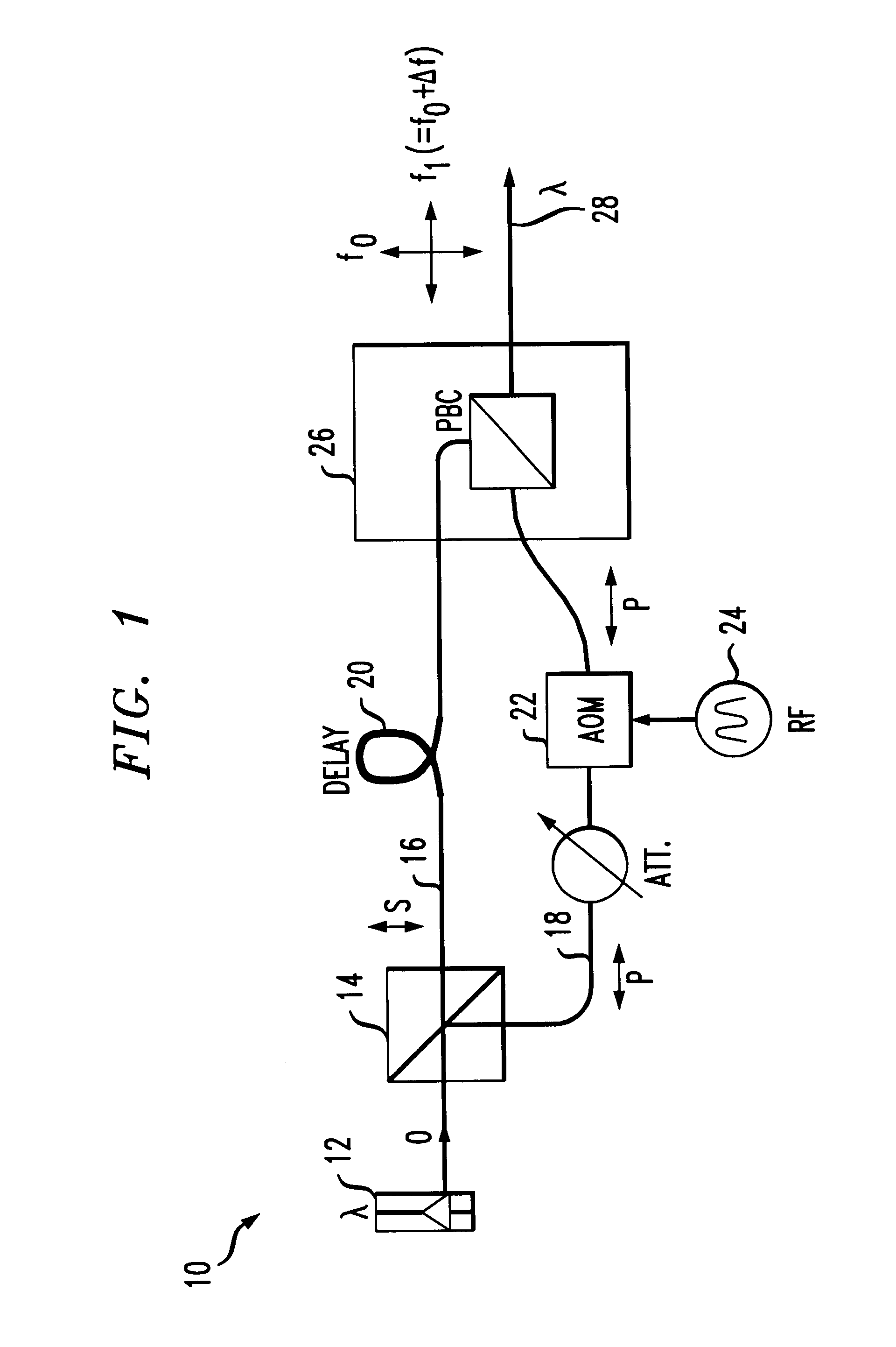Optical fiber transmission system with polarization multiplexing to reduce stimulated brillouin scattering
a transmission system and optical fiber technology, applied in multiplex communication, semiconductor lasers, instruments, etc., can solve the problems of increasing the bit error rate, sound waves that scatter more light, and the potential for significant contribution of sbs to signal degradation at relatively low input power levels, so as to reduce the level of stimulated brillouin scattering and reduce the effect of sbs
- Summary
- Abstract
- Description
- Claims
- Application Information
AI Technical Summary
Benefits of technology
Problems solved by technology
Method used
Image
Examples
embodiment 40
An alternative embodiment 40 of the present invention is illustrated in FIG. 7. In this case, a 3 dB coupler 42 is used to split output optical signal O from laser source 12 into two relatively equal power components, denoted O1 and O2 in FIG. 7. As with the previous embodiment discussed above in association with FIG. 1, one component (in this case, O1, is subjected to a time delay ΔτD and the remaining component (O2) is frequency shifted by AOM 22 by a predetermined amount Δf. In this embodiment, a pair of electro-optic modulators 44, 46 are included, one on each arm of arrangement 40. EOMs 44,46 are used to supply the input data stream to the transmitter, instead of directly providing the data D on the bias current supplied to laser source 12. In one embodiment data signal D and is complement D′ are applied as inputs to EOMs 44 and 46, respectively. Alternatively, two different data streams, D1 and D2 may be simultaneously transmitted using this arrangement. Orthogonality between ...
PUM
| Property | Measurement | Unit |
|---|---|---|
| frequency | aaaaa | aaaaa |
| time delay | aaaaa | aaaaa |
| frequency shift | aaaaa | aaaaa |
Abstract
Description
Claims
Application Information
 Login to View More
Login to View More - R&D
- Intellectual Property
- Life Sciences
- Materials
- Tech Scout
- Unparalleled Data Quality
- Higher Quality Content
- 60% Fewer Hallucinations
Browse by: Latest US Patents, China's latest patents, Technical Efficacy Thesaurus, Application Domain, Technology Topic, Popular Technical Reports.
© 2025 PatSnap. All rights reserved.Legal|Privacy policy|Modern Slavery Act Transparency Statement|Sitemap|About US| Contact US: help@patsnap.com



